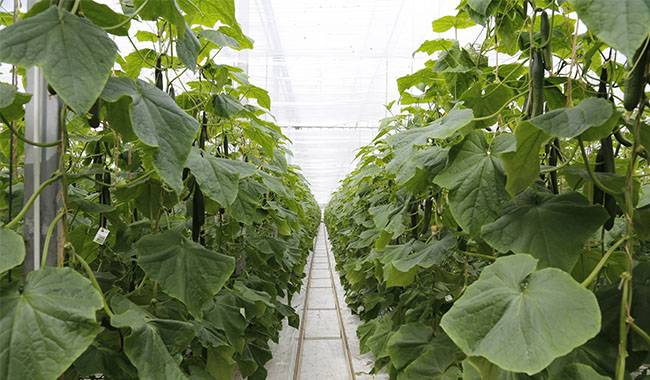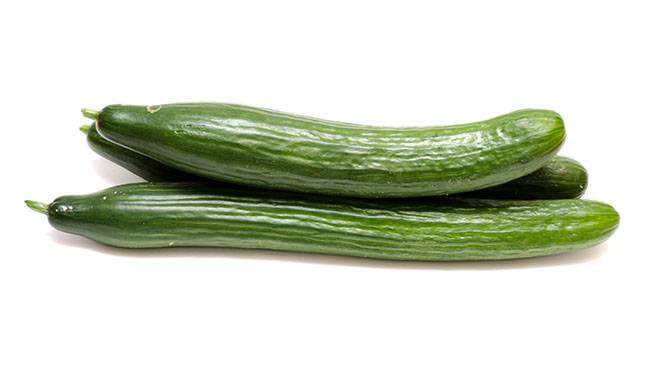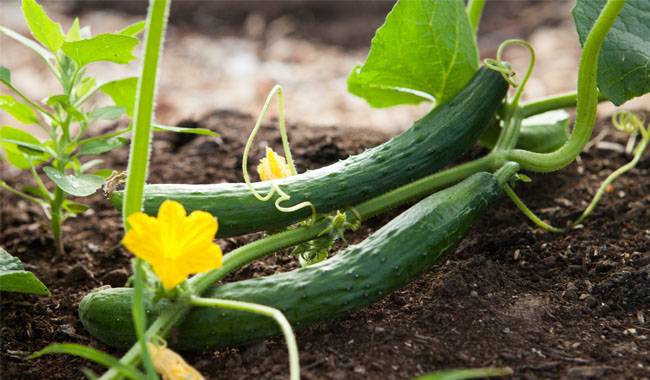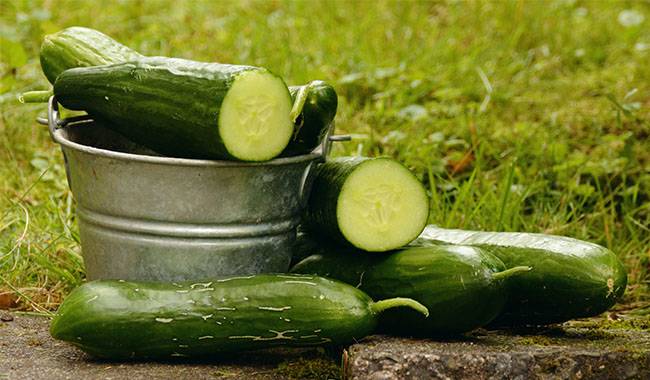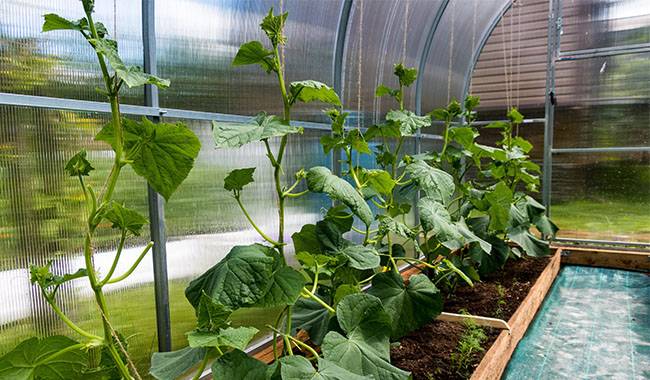
Fresh cucumbers, pickled cucumbers, and salted cucumbers are a must in our diet. There seems to be nothing more pleasant than the “delicious” crunch of fresh (from the bed) cucumbers that you can hear from morning to night in the middle of summer. Cucumbers, the most common vegetable crop, are grown in open fields, greenhouses, greenhouses, temporary coverings, depending on the weather and climatic conditions.
But in principle, technology is always the same. To get a high-quality cucumber crop at an early stage in areas with long cold springs, it is best to cultivate by sprouting. It can be done in different ways: in the soil or not, in separate containers or containers, special boxes, in a greenhouse, on a kitchen windowsill, under a temporary shelter on a heated bed. The main thing is to grow healthy seedlings in cucumbers from seed.
PREPARATION OF SOIL AND CONTAINERS FOR SOWING
Containers for sowing cucumber seeds
Preparation begins 3-5 weeks in advance with the preparation of containers for seedlings. The root system of cucumbers does not tolerate disturbances from outside. Therefore, for home cultivation, it is better to sow seeds in individual peat pots or cups from under fermented dairy products.
In these containers, cucumber seedlings do not actually experience root rot. If the trays are used repeatedly, and seedlings are grown by transplanting, it is necessary to sterilize all containers with a 1-2% manganese solution.
Preparation of soil mixture
As with other crops, cucumber seedlings need a light component but a moisture-dense soil mixture, permeable and breathable, well saturated with organic and mineral fertilizers. The germination period of cucumbers, depending on the variety and type of maturity (early, medium or late), varies from 25 to 30 days. Therefore, it is better not to apply fertilizer during the growth and development of seedlings, which should be immediately sown in a fertilized soil mixture.
Beginners usually buy ready-made decontaminated soil, thus reducing the time needed for preparation. Those who like to tinker will prepare their own soil mixture. A generic home-prepared soil mixture usually consists of 3-4 ingredients
- Leaf or sod soil (not from conifers).
- Mature compost or readily available bio-biogas.
- Top layer of peat.
- Sand.
Mix all parts separately in a ratio of 1:2:1:1. If peat is not available, you can prepare a mixture of 3 ingredients. Experienced gardeners prepare their own, time-tested soil mix and make sure to check its acidity (pH=6.6-6.8). To know how much mixture and vessels to prepare as a basis for calculation, take 3 plants per 11 square feet of area.
Cucumber seedlings can be planted on peat pellets in a plastic container with a grooved bottom. Place the pellets with a thickness of 5-8 mm in a plastic container, water them, wait for them to swell, and then plant the seeds. The cucumber seedlings, ready for sowing, are pushed out of the container and planted in the ground by bending the bottom backward.
Sterilize the soil mixture for cucumber seedlings
Prepare the purchased soil listing for decontamination, but (just in case) put it in frost for additional frost. Purchased potting soil is not additionally fertilized, but you can still check with the seller about its readiness for use.
In northern regions, self-prepared soil mixtures must be decontaminated in the fall or 2-3 weeks before planting by freezing or in warm, frost-free areas by steaming/heating or other methods.
After sterilization, mineral fertilizers and compounds are added to the self-prepared soil mixture to promote rapid root formation and inhibit fungal and bacterial infections (which may not be completely destroyed during sterilization).
Remember! The most common cause of early seedling mortality is a fungal and bacterial infection in the soil, leading to root rot.
Add 200 g of ash (glass), 40-50 g of phosphate fertilizer, and 30-35 g of potassium sulfate per 2.5 Gal (10 kg) to the soil mixture. You can use 80-90 g of nitrophoska instead.
The dry soil mixture can be mixed with bio fungicides: trichothecene and phytosporin with bioinsecticide: phytosporin.
The soil mixture can be treated with a working solution of organic biofertilizer yield or dry preparation “organic crop protection agent” one week before filling the seedling containers.
Moisten the soil. In a warm and moist environment, effective microorganisms multiply rapidly and eventually destroy the disease-causing microbiota.
CUCUMBER SEEDS READY FOR SOWING
For the novice grower of young seedlings, it is more practical to buy ready-made seeds. It is already prepared for sowing. It does not require additional treatment, except for germination (if provided).
Please note: The package of cucumber seeds should always indicate the following data:
- The name of the variety or hybrid.
- Region, planting area (subzone).
- Planting method (open field, greenhouse)
- Date of sowing of seedlings
- Approximate time of planting in a permanent location
- Maturity period (early, medium, late, etc.)
- intended use of the crop (salad, pickling, other winter storage)
Do not buy seed material from random sellers. You may be deceived.
Calibration of cucumber seeds
Self-harvested cucumber seeds need to be calibrated and sterilized. In order to make sprouts friendly, it is necessary to sow seeds of the same condition. For this purpose, calibration was performed.
Add a dessert spoon without top food salt to a cup of water. The cucumber seeds were poured into the prepared solution and stirred. After a few minutes, the lighter-weight cucumber seeds will float, and the heavier ones will sink to the bottom. Separate out the lighter-weight seeds. Strain the salt solution through a sieve, and the seeds left at the bottom of the glass are thoroughly washed under running water and lightly dried at room temperature.
Sterilization of cucumber seeds
The easiest way to sterilize cucumber seeds under domestic conditions – is to soak the seeds wrapped in gauze in a 1% manganese solution for 15-20 minutes.
The longer the soaking time, the more negatively it affects the germination of the seeds. Please don’t overdo it!
After disinfection, the seeds should be rinsed again under running water and dried at room temperature on a good moisture-absorbing expanded napkin (not film).
Cucumber seeds are more successfully disinfected in a solution of one of the biological preparations – “biological drugs against fungal plants.” The preparation of the solution for seed dressing is carried out according to the relevant instructions. After disinfection with biological preparations, seeds do not need to be washed. They are immediately dispersed onto a napkin for drying. Always dry the seeds until they are loose but at room temperature.
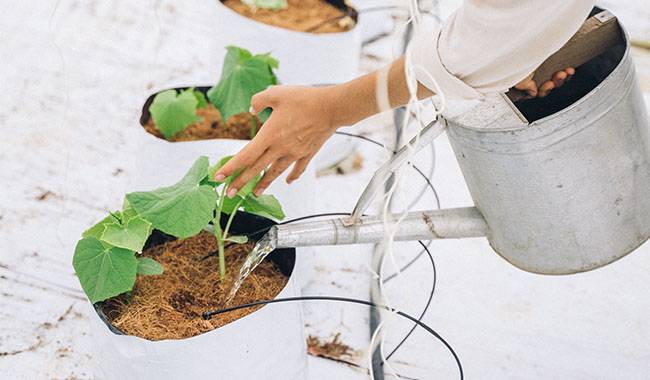
SOWING CUCUMBER SEEDS
Sowing into containers
After all the preparations, before sowing cucumber seeds, fill 2/3 of the height of the container with prepared soil, lay a drain in the bottom, place the container on a tray, and water it. Allow excess water to drain through the drainage holes. Leave the container for a while to allow the soil mixture to mature (it should be moist and crumbly, not slimy).
Place soil directly in the middle of the prepared container or place 2 cucumber seeds at a depth of 0.2-0.4inch (0.5-1 cm). Leave one seedling after germination to develop better. The second seed is removed by pruning at the soil level. Seeds can be dry or germinated. Cover cucumber seeds with sand or dry soil at 0.4-0.6inch (1-1.5 cm). Lightly compact. Moisten the spray by passing it through a sprayer and cover with cling film to simulate greenhouse conditions.
Place the tray containing the sown cucumber seeds in a warm place. Maintain air temperature at 78-82°F (26-28°C) prior to germination. The soil mixture is not watered until the cucumbers germinate, only sprayed with warm water from a sprayer. Lift the aluminum foil (when sprinkling) daily to dry.
CARE OF CUCUMBER SEEDLINGS
Cucumber sprouts appear on days 3-5, depending on seed preparation (drying or germination) and conditions prior to germination. When a large number of cucumber sprouts appear, remove the film and place the tray with the seedlings in a well-lit area. Lack of light will cause the seedlings to stretch lopsidedly toward better light.
Temperature regime for cucumber seedlings
The temperature range for germination of cucumber seeds is 78-82°F (26-28°C). As soon as the cucumber germinates and spreads its cotyledon seedlings, the air temperature decreases to 41-44°F (5-7°C) and remains at 64-71°F (18-22°C) during the day and 59-62°F (15-17°C) at night for the first 2 weeks. The optimal soil temperature for this period is 64-68°F (18-20°C).
Beginning at 2 weeks of age allow cucumber seedlings to become accustomed to temperature changes during the day and night. Ventilate the room at high humidity with no ventilation and a strong drop in temperature. 5-7 days before planting the cucumber seedling in a fixed place, start her hardening to accustom her to harsher living conditions.
Light regime
Cucumbers are short daylight plants. Breeders are currently breeding and releasing varieties that are neutral to the length of daylight, but they still have requirements for light brightness. With insufficient light and long overcast days, cucumbers stretch, have poor nutrient uptake and begin to get sick. Therefore, when using plant lights, use fluorescent lights and other lighting devices purchased at specialty stores for early seeding.
As the cucumber seedlings grow, the containers are moved away to avoid overgrowing the plants. In optimal positioning, the leaves of adjacent plants should not touch each other.
Watering of cucumber seedlings
Watering refers to the three basic conditions (light, temperature, and watering) for the healthy growth of cucumber seedlings.
We start watering cucumber seedlings 5 days after germination. Watering and sprinkling should be done only with warm water 75-77 °F (24-25 °C). Before that – only two sprinkles at most (very shallow) per light day. If necessary, you can water finely from above along the container’s rim without touching the leaves. But it is better to water through the tray.
After each watering, the soil must be covered with dry sand or a fine mixture of soil and humus. Strong moisture can cause root rot of cucumbers due to the multiplication of mycorrhizal fungi. Mycorrhizal mold covers the soil and infects the entire seedling, leading to the mass death of young and more mature seedlings.
Fertilizing cucumber seedlings
If the soil mixture is prepared correctly and well stuffed with fertilizer, fertilization can be left alone. Cucumber seedlings are cultivated for a short period of time, between 25-30 days, and she does not have time to feel the need for them.
If the leaves of cucumber seedlings change color, stop developing, droop, and under other optimal conditions (temperature, light, air and soil moisture, absence of diseases), the plant can be considered in need of fertilization.
Experienced gardeners, after irrigation, cover the soil with sand mixed with grass ash. It can be used as a fertilizer. If necessary, feed cucumber seedlings on moist soil with Kemira solution, ash solution, trace elements mixture (must have boron). To find out more precisely which elements the plants are deficient in, you can see signs of elemental deprivation on the pictures of the catalog and prepare their mixtures accordingly or buy ready-made ones.
Feeding of trace elements can be carried out by spraying on the leaves of seedlings. Care should be taken when preparing nutrient solutions. They should be slightly concentrated and diluted. Higher concentrations can burn plants. After soil fertilization, be sure to sprinkle the soil with clean water and mulch.
GROWING CUCUMBER SEEDLINGS IN THE GROUND
Cucumber seedlings of 25-30 days old, ready for planting, should have 3-5 well-developed leaves, which can be tendrils and buds. Peat pots with plants are planted every 12-16inch (30-40 cm) to a depth of half the container so that the edges protrude about 0.2-0.4inch (0.5-1 cm) from the soil surface. After planting, water the cucumber seedlings with warm water.
To plant cucumber shoots, bend back the bottom cut made at the time of sowing, push out the root ball along with the plant, and plant immediately in a pre-watered hole. When watering, you can add active biological medicine from fertilizer – “Kemira” to the rooting agent solution.
Do you grow cucumbers by seedlings, or do you immediately plant the seeds in the ground? Share your experience of growing cucumber seedlings in the comments of the article.
More related information about growing cucumbers plants




